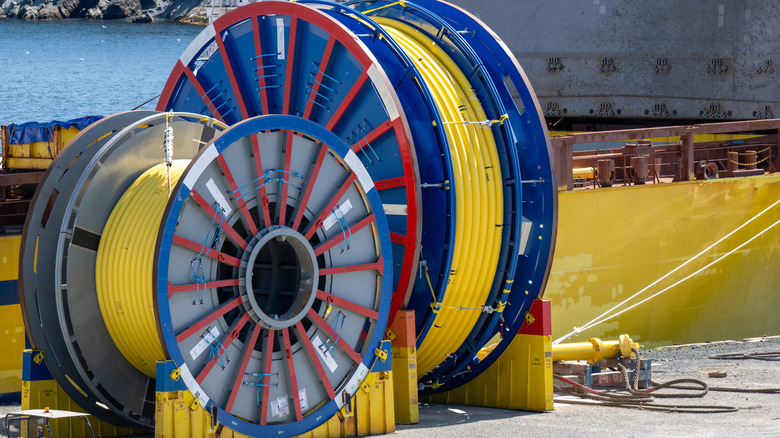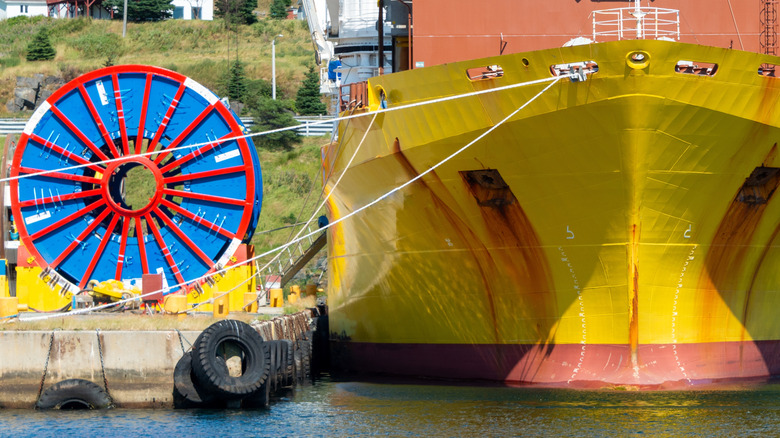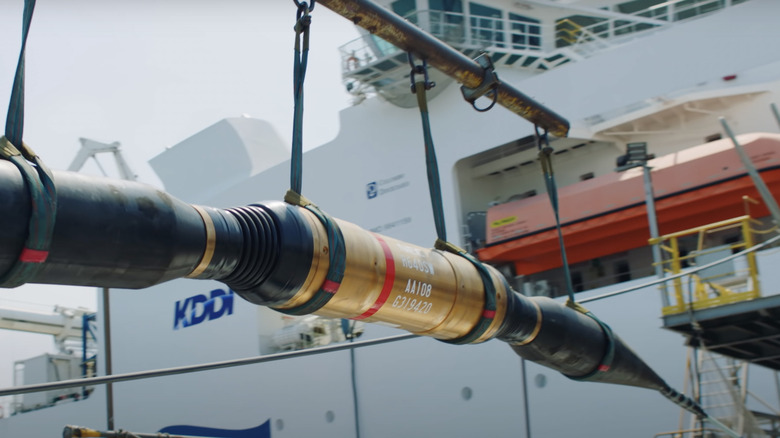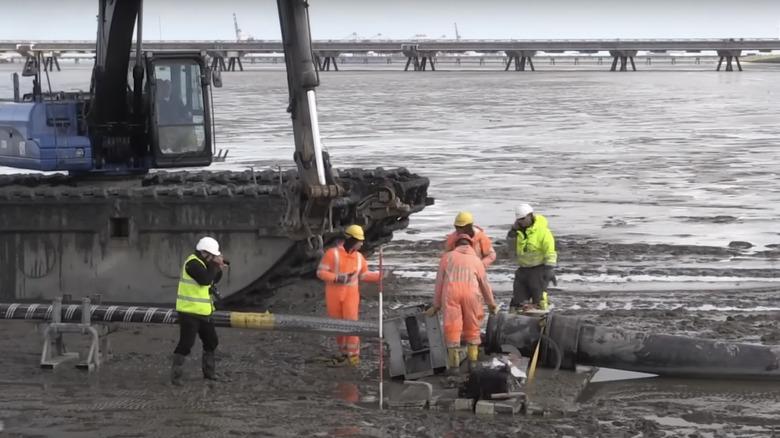What Are Submarine Cables And How Important Are They To The Modern World?
If you were to go back about 200 years ago and bring a stranger to modern times, chances are they might feel that they're looking at magic. Much of the technology we have now was once unfathomable to the average person. For example, we're able to speak to and even see people oceans away and share our thoughts to millions of people all at once. In part, this is due to a cocktail of innovations that overlapped, such the creation of our mobile phones, development of apps, and the network infrastructure that enables all-day connectivity. But one surprising way that all this (and more) is possible? Submarine cables.
It's important to note that submarine cables have been around for more than a century and a half since 1886. But while it isn't necessarily new technology, it hasn't stopped evolving and continues to revolutionize many aspects of our day-to-day life. Initially, the first trans-Altantic cable was able to send up to a dozen words per minute with its now-simple copper wire. However, it took 90 years before one of the first big breakthroughs happened: the capacity to manage multiple voice channels. Although at first, it only connected the U.K. and North America, the years after revealed that the widespread usage was inevitable, especially with the many additional uses that have popped up. But, what are submarine cables exactly, how do they really work, and how are they making a difference?
What are submarine cables and how do they work?
In simple terms, submarine cables are the channel by which communications, power transmission, and even environmental monitoring can occur across oceanic distances. To get a better idea of the scale, complexity, and interconnectedness of the submarine cables in the world today, you can check out TeleGeopraphy's Submarine Cable Map. As of this writing, the longest cable that is still in commission runs a little over 24,000 miles across three continents.
Through the use of specialized ships, submarine cables are basically fiber optic cables that are able to transmit data or power from one place to another. To do this, there are several teams designated to study optimal routes before strategically setting the cables down at depths that can reach around 13,000 ft, according to Dgtl Infra. All-in-all, it can take up to three years to develop and install underwater cables before they are fit for use.
While the actual cost of each cable will vary based on specific conditions, such as the distance and geography, Dgtl Infra does mention that the price hovers around the $40,000 per mile mark. But eye-watering figures aside, plenty of owners have decided that it's worth investing in for several reasons. Here are the different ways we already rely on them and all the potential ways they could change the game.
The role of submarine cables in the modern world
Despite leaps and bounds in modern satellite tech, the reality is that an overwhelming majority of our communications still rely on submarine cables, according to the National Oceanic and Atmospheric Administration (NOAA). When the internet first made waves, tech companies were one of the early customers. But after crunching the numbers, many of them realized that it would make sense to have more control over their network infrastructure. As of 2024, Telegeography shares that major tech giants, such as Google, Meta, Amazon, and Microsoft, now have ownership of dozens of submarine cables worldwide. With innovation in their blood, this also meant an increasing number of investments in developing technology to meet their growing consumer demands. For example, Google's moves to develop subsea fiber optics includes breakthroughs in dynamic signal routing and increased capacities.
In some cases, submarine cables also play a role in transferring power between distances, such as across islands or offshore energy plants. In fact, Nikkei mentions that it played a critical role for Japan's efforts to utilize energy harnessed from windmills to power its mega city, Tokyo. That said, scientists have been discovering more ways to use existing submarine cable technology for other uses, such as detecting earthquakes and monitoring the tides. While current technology can be a little limiting, as it won't be able to produce the same amount of data as specialized devices, there have been several successful experiments.
The growing need to protect underwater lines
These days, there's no denying that much of our critical infrastructure is reliant on these underwater cables, like government systems, banking, and telecommunications. In fact, Business Insider shares that trillions of dollars worth of banking transactions pass through them daily. Because of this, it's only natural that the submarine cables become targets by bad actors. There have been reported attacks on undersea internet cables in both Europe and Asia. As tensions heighten globally and opposing actors have begun actively targeting this system, two things become apparent: a growing need to protect existing submarine cable infrastructure or increased efforts to reduce dependence on them.
Because of how crucial submarine cables are to both personal and national security, it's no wonder that many countries have invested heavily in their submarine fleets to make sure they can keep them safe. Leading the pack, the United States boasts not just the most number of submarines (at 71), but its fleet is also technologically advanced in more ways than one. In fact, we've gone into a deep dive on how the U.S. Navy had plans to increasingly integrate artificial intelligence with its submarine fleet. On the other end of the spectrum, the call to invest in alternative network systems have also become louder. Among the many possible options, there has been some promising research on things like lasers and improved satellite technology.



